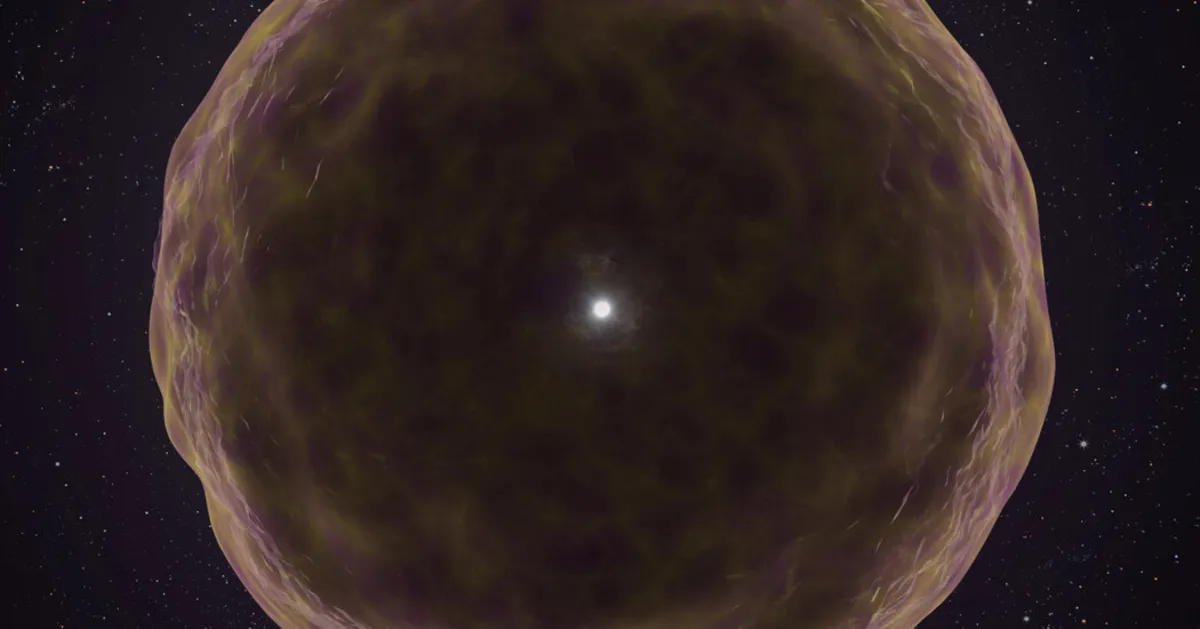
Carl Sagan once famously stated that we are all made of star-stuff. For centuries, astronomers have theorized that the heavier elements that form our very existence, such as carbon and oxygen, are synthesized within stars. These elements are subsequently released into the universe when stars die and explode in powerful supernovas. However, until recently, astronomers lacked definitive proof of this process occurring deep within stars.
Researchers have now made a groundbreaking discovery of a star located approximately two billion light-years from Earth. This star shed its onion-like layers, revealing its heaviest materials before exploding, offering insights into our cosmic origins. “We know of over 10,000 supernovas, but we detected a supernova that is very, very different from anything we’ve observed before,” stated Steve Schulze, an astrophysicist at Northwestern University and the lead author of the study published in Nature on Wednesday.
Dr. Schulze and his team identified the supernova, named SN 2021yfj, through data collected by the Zwicky Transient Facility survey conducted at the Palomar Observatory in California. Additional observations from the Keck Observatory in Hawaii allowed the researchers to analyze the explosion’s light and the elements released during the event. They estimated that the star had a mass approximately 60 times that of our Sun—a truly massive celestial body.
Typically, when a star reaches the end of its life, astronomers observe a chaotic mix of elements from its interior being ejected into space. However, SN 2021yfj displayed an unusual behavior: its layers had been gradually stripped away over thousands of years before its explosive finale. This remarkable finding provides crucial evidence regarding the star’s layered structure, a concept that scientists have long theorized. Stars are believed to possess onion-like layers, with lighter elements such as hydrogen and helium forming the outer layers, and progressively heavier elements like carbon, oxygen, and iron forming the core.
The research team observed the moment when the star’s iron core exploded, illuminating a previously expelled stellar layer rich in silicon, sulfur, and argon. According to Matt Nicholl, an astrophysicist at Queen’s University Belfast who was not involved in the study, this discovery “confirms the onionskin structure of massive stars that we all expected to see.”
While the exact reason behind the star's extensive shedding of layers remains uncertain, Dr. Schulze and his team propose that violent internal pulses may have sequentially stripped material from the star. However, the presence of helium in the star’s final layer poses a mystery. “It’s a fly in the soup that shouldn’t be there,” Dr. Schulze remarked. Helium is expected to be one of the first layers ejected due to its lighter nature. Anya Nugent, an astrophysicist at the Harvard–Smithsonian Center for Astrophysics and co-author of a related article, noted that the helium should have been expelled thousands of years prior.
One possible explanation for the presence of helium is that a companion star may have influenced the shedding of layers and injected helium into the lower layers. Another theory suggests that powerful jets could have emerged from the original star, dredging up material from its depths, although no such jet was observed. Traditionally, supernovas are categorized into two main types: Type I, which lack hydrogen, and Type II, which contain hydrogen. SN 2021yfj represents a new classification, referred to as Type 1en by the research team. “The properties of this supernova are so unusual,” Dr. Schulze explained. “There is no object that is even remotely similar.”
The team estimates that perhaps one in 1,000 supernovas undergoes such extreme stripping, making them difficult to identify as they often resemble other supernovas unless examined in detail, as was the case with SN 2021yfj. “There was a lot of luck involved in making this discovery,” concluded Dr. Schulze.